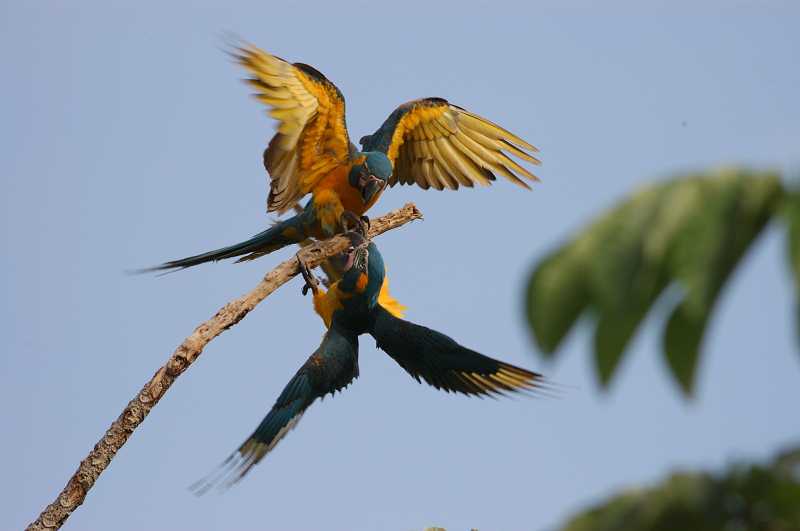Blue-throated Macaws: Surveys and Fieldwork
Counts on different populations within a species’ range are crucial to understanding its conservation status. WPT collaborator Fundación CLB has been assessing the Blue-throated Macaw’s (Ara glaucogularis) status across its range and exploring habitats for potential reintroductions of birds from breeding-for-release programs. Additionally, for the first time, a census was completed across the southern part of the macaws’ range in 2022, where the team found nearly 40 birds, with macaws also being sighted at seven new sites. The reasons for the discovery are unclear and may be because the team had placed nest boxes where the birds had never nested before. Another count in 2023 found about 65 birds.
Using two new specialised phone apps, the team collects observational and locational data on wild Blue-throated Macaws and conducts social surveys to collect data from residents on macaw sightings, counts and behaviours.
Status: IUCN Critically Endangered / CITES Appendix I
Population: 312-455
Range: Occurs only in Llanos de Mojos in NC Bolivia, concentrated east of the upper Río Mamoré, Beni. A smaller population exists in the Municipal Protected Area of the Great Tectonic Lakes of Exaltación.
Natural history: This macaw ranges in a small area in the Beni department in NC Bolivia in flooded areas such as savannas, palm groves and tropical forest in wet lowlands up to 300 m (984 ft). Its diet includes fruit pulp and liquids of Motacú Attalea and Acrocomia palms. It will roost with other parrots, such as Blue-and-yellow and Red-and-green Macaws. Breeding is August- December; nest is in a tree cavity.

